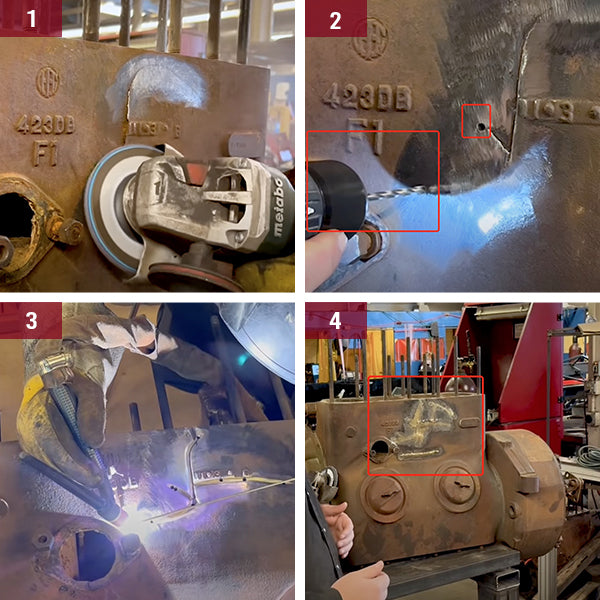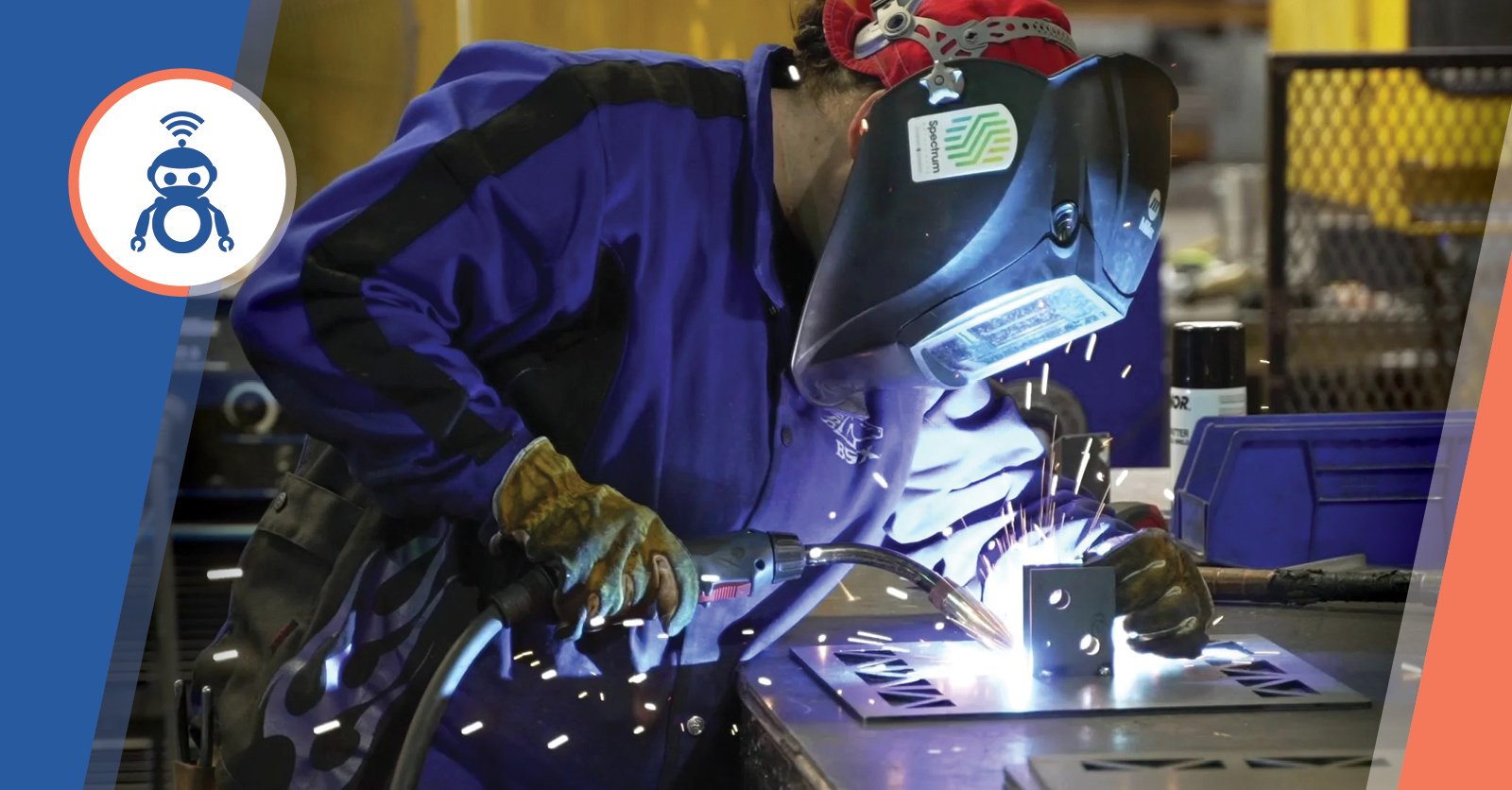Common Welding Repair Issues and Exactly How to Address Them Properly
Welding repairs commonly run into a variety of issues that can jeopardize the stability of the final item. Common issues consist of poor penetration, porosity, and misalignment, amongst others. Each issue offers unique obstacles that require certain methods for resolution. Recognizing these issues is vital for welders intending to enhance their end results and skills. This conversation will discover these common welding fixing issues and efficient approaches to resolve them.
Inadequate Penetration
Inadequate infiltration takes place when the weld steel fails to fully fuse with the base product, leading to weak joints and potential architectural failures. This issue commonly comes from insufficient warmth input, inaccurate electrode angle, or incorrect welding speed. Welders might come across insufficient penetration as a result of a miscalculation of the required parameters for a details product density or kind. Furthermore, contamination on the base material's surface area can impede effective bonding, worsening the trouble. To resolve poor penetration, welders need to ensure appropriate setups on their equipment and maintain a tidy work surface area. Routine assessment of welds is recommended to identify any kind of deficiencies early, permitting timely corrections and the avoidance of endangered structural integrity in welded assemblies.
Porosity
Porosity is a common flaw in welded joints that shows up as tiny gas bubbles trapped within the weld steel. This problem can endanger the honesty of the weld, resulting in minimized toughness and potential failure under stress. Montana Mobile Welding and Repair Welding. Porosity typically arises from contamination, wetness, or inappropriate welding strategies, which allow gases to get away into the liquified weld swimming pool. To address porosity, welders ought to ensure appropriate surface area prep work, keep a tidy workplace, and use suitable welding specifications. Furthermore, picking the right filler material and protecting gas can alleviate gas entrapment. Normal evaluation and screening of welds can assist determine porosity early, assuring prompt restorative activities are taken, consequently protecting the high quality and dependability of the welded framework
Imbalance
Misalignment in welding can occur from various aspects, including improper setup and thermal expansion. Understanding the origin is necessary for efficient resolution. A number of modification methods are offered to realign elements and guarantee structural stability.
Causes of Misalignment
Welding imbalance often originates from a selection of underlying problems that can compromise architectural honesty. One main cause is improper fit-up of elements prior to welding, which can bring about voids and unequal surfaces. Variants in thermal expansion throughout the welding process can also result in distortion, especially if the products being joined have different coefficients of development. Furthermore, poor clamping and fixturing may fail to hold parts safely in location, resulting in movement throughout welding. Poorly conserved equipment, including welding devices and tools, might introduce incongruities in the weld grain, additional adding to misalignment. Ultimately, operator error, stemming from not enough training or experience, can also play a substantial role in producing misaligned welds.
Modification Strategies Readily Available
Addressing misalignment effectively calls for a mix of rehabilitative strategies tailored to the certain problems available. One usual method is making use of fixtures or jigs to hold components in the correct position throughout welding, guaranteeing constant positioning. Furthermore, pre-heating the products can help in reducing distortion and boost fit-up. For substantial misalignment, mechanical realignment methods, such as making use of hydraulic jacks or clamps, can be employed to correct the position prior to welding. Post-weld warm treatment may also be necessary to ease stress and anxieties triggered by imbalance. Finally, cautious evaluation and adjustment during the arrangement stage can protect against imbalance problems from becoming substantial issues, promoting a smoother welding procedure and improving general architectural honesty.
Distortion
Distortion is a typical obstacle in welding that can occur from numerous factors, consisting of uneven heating & cooling. Understanding the reasons of distortion is vital for applying efficient avoidance strategies. Addressing this problem not just enhances architectural integrity yet likewise enhances the general top quality of the weld.
Root causes of Distortion
When subjected to the extreme warm of welding, products commonly undertake changes that can cause distortion. This sensation primarily emerges from thermal development and tightening throughout the welding procedure. As the weld location warms up, the product expands; upon cooling, it acquires, which can create inner anxieties. On top of that, unequal home heating across a work surface can aggravate these stresses, causing bending or flexing. The sort of product also plays a significant duty; steels with differing thermal conductivity and coefficients of development might react in different ways, bring about uncertain distortions. In addition, inadequate joint layout and poor fixturing can add to imbalance throughout welding, increasing the chance of distortion. Understanding these causes is necessary for effective welding repair service and prevention strategies.
Avoidance Techniques
Reliable avoidance strategies for distortion throughout welding concentrate on controlling warmth input and ensuring correct joint style. Maintaining a regular warm input helps to decrease thermal growth and contraction, which can lead to distortion. Using methods such as pre-heating the work surface can also decrease the temperature gradient, promoting consistent heating. Furthermore, picking suitable joint designs, such as T-joints or lap joints, can improve security and lower stress and anxiety focus. Implementing proper fixturing to secure the workpieces in position further aids in maintaining positioning throughout the welding procedure. Staggered welding sequences can disperse this link warm a lot more uniformly, preventing localized distortion. By using these techniques, welders can substantially decrease the probability of distortion and boost the overall high quality of their welds.
Cracking
Splitting is an usual issue run into in welding repair work, usually resulting from numerous variables such as incorrect cooling rates, material choice, or inadequate joint preparation. The incident of fractures can substantially compromise the stability of the weld, bring about potential failures during procedure. To address this issue, welders need to first evaluate the origin, ensuring that materials work and properly chosen for the specific application. Additionally, controlling the cooling price throughout the welding procedure is vital; quick air conditioning can generate stress and lead to breaking. Proper joint design and preparation also contribute to minimizing the threat. Implementing these approaches can boost weld top quality and resilience, eventually minimizing the chance of fracturing in completed weldments.

Insufficient Combination
A significant concern in welding repair services is incomplete combination, which occurs when the weld metal does not adequately bond with the base product or previous weld passes - Montana Mobile Welding and Repair. This defect can cause weak points in the joint, potentially jeopardizing the integrity of the welded structure. Variables adding to incomplete blend include inadequate warmth input, improper welding method, and contamination of the surface areas being signed up with. To address this issue properly, welders should ensure correct pre-weld cleaning and surface prep work, as well as change their welding criteria to achieve sufficient infiltration and blend. Routine assessment throughout the welding procedure can additionally aid identify incomplete combination early, permitting for prompt restorative actions to boost the overall top quality of the weld
Overheating
While welding repairs can enhance structural stability, overheating provides a substantial obstacle that can lead to product destruction. Extreme warm throughout welding can change the mechanical homes of metals, resulting in reduced strength, increased brittleness, and bending. This sensation is especially vital in high-stress applications where structural dependability is critical. Determining overheating can include visual evaluations for discoloration or distortion, as well as keeping an eye on temperature during the welding procedure. To alleviate the dangers associated with getting too hot, welders must utilize appropriate techniques, such as regulating warm input, adjusting traveling speed, and utilizing suitable filler products. Additionally, implementing pre- and post-weld warmth therapies can help restore product residential or commercial properties and enhance the total top quality of the repair work, ensuring long-lasting performance and security.
Regularly Asked Inquiries
What Are the Common Indicators of a Welding Flaw?

Exactly How Can I Examine My Welds for High quality?
To test welds for high quality, one can use visual assessments, ultrasonic screening, and radiographic approaches. Each strategy guarantees structural integrity, identifies defects, and confirms adherence to specified requirements, eventually improving the reliability of the welded joints.
What Safety Precautions Should I Take While Welding?
When welding, one ought to prioritize safety by putting on ideal individual safety devices, guaranteeing proper ventilation, securing flammable products away, maintaining a clean workspace, and recognizing environments to avoid injuries and mishaps.
Can I Repair a Weld Without Renovating the Entire Joint?
Repairing a weld without redoing the whole joint is possible, depending welder fabricator on the damages (Belgrade). Methods such as grinding, including filler product, or utilizing a welding procedure can successfully deal with specific imperfections while protecting the bordering structure
What Tools Are Essential for Reliable Welding Repair Works?
Essential devices for effective welding fixings include a welding machine, cable brush, grinder, safety gear, clamps, and filler products. Each tool plays an essential duty in making certain high quality and safety and security throughout the repair service process. Porosity usually emerges from contamination, moisture, or incorrect welding strategies, which allow gases to get away right into the molten weld pool. Inadequately maintained devices, consisting of welding devices and devices, may present inconsistencies in the weld grain, further adding to imbalance. When subjected to the intense warm of welding, products often go through changes that try this out can lead to distortion. Splitting is an usual issue run into in welding repairs, usually resulting from different factors such as incorrect air conditioning prices, product selection, or inadequate joint preparation. A considerable problem in welding repair services is insufficient blend, which takes place when the weld steel does not effectively bond with the base product or previous weld passes.